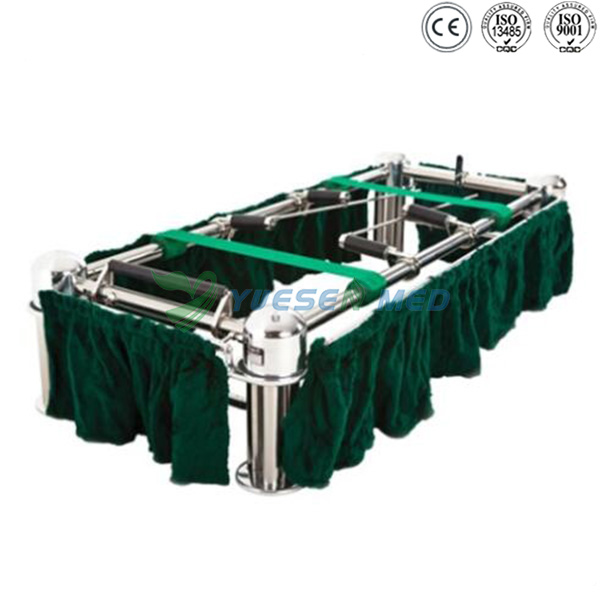Title: Lifesaving Technology: Exploring the Critical Role of ICU Intensive Care Ventilators
Introduction:
In the realm of critical care medicine, intensive care unit (ICU) ventilators stand as lifesaving technology, playing a pivotal role in supporting patients with respiratory failure or compromised lung function. These sophisticated devices deliver mechanical ventilation to ensure adequate oxygenation and ventilation, thereby sustaining vital organ function and improving patient outcomes. In this comprehensive guide, we delve into the essential functions, technological advancements, and profound impact of
ICU intensive care ventilators in healthcare settings.
Understanding ICU Intensive Care Ventilators:
Definition and Functionality: Overview of ICU ventilators and their primary role in providing mechanical ventilation support to critically ill patients.
Components and Operation: Explanation of the key components of ICU ventilators, including ventilator modes, settings, and alarms.
Indications for Use: Common medical conditions and scenarios necessitating the use of ICU ventilators in intensive care settings.
Evolution of Ventilator Technology:
Historical Perspective: Brief overview of the development of mechanical ventilation technology and its evolution over time.
Technological Advancements: Exploration of recent innovations in ICU ventilator design, including advanced monitoring capabilities, adaptive ventilation algorithms, and wireless connectivity.
Integration with Other Systems: Integration of ICU ventilators with electronic health records (EHR), bedside monitoring devices, and telemedicine platforms to enhance patient care coordination and data management.
Essential Functions and Features:
Oxygenation and Ventilation: Fundamental functions of ICU ventilators in delivering oxygen and removing carbon dioxide from the patient's lungs.
Ventilator Modes: Overview of commonly used ventilation modes, including volume control ventilation, pressure control ventilation, and assist-control ventilation.
Lung Protective Strategies: Implementation of lung-protective ventilation strategies to minimize ventilator-associated lung injury and improve patient outcomes.
Alarm Systems: Importance of alarm systems in ICU ventilators for early detection of patient deterioration and prevention of adverse events.
Clinical Applications and Patient Populations:
Acute Respiratory Failure: Management of acute respiratory distress syndrome (ARDS), pneumonia, and other conditions requiring mechanical ventilation support.
Chronic Respiratory Failure: Long-term ventilation support for patients with chronic obstructive pulmonary disease (COPD), neuromuscular disorders, and other chronic respiratory conditions.
Surgical and Trauma Patients: Utilization of ICU ventilators in the perioperative period and management of respiratory complications following surgery or trauma.
Neonatal and Pediatric Ventilation: Special considerations and modifications in ventilation strategies for neonatal and pediatric patients in the ICU.
Patient Monitoring and Management:
Respiratory Parameters: Monitoring of key respiratory parameters, including tidal volume, respiratory rate, peak inspiratory pressure, and oxygen saturation.
Hemodynamic Monitoring: Integration of hemodynamic monitoring parameters, such as blood pressure, heart rate, and cardiac output, to guide ventilator management and optimize patient hemodynamics.
Continuous Monitoring: Importance of continuous monitoring of ventilator parameters and patient status to detect changes in respiratory function and response to therapy.
Challenges and Considerations:
Ventilator-Induced Lung Injury: Strategies for mitigating ventilator-associated lung injury, such as lung-protective ventilation, prone positioning, and minimizing tidal volume.
Ventilator-Associated Events: Prevention and management of ventilator-associated events, including ventilator-associated pneumonia (VAP), ventilator-associated tracheobronchitis (VAT), and ventilator-associated events (VAE).
Resource Allocation: Ethical considerations and challenges related to the allocation of ICU ventilators during public health emergencies and critical care triage situations.
Training and Education:
Importance of comprehensive training programs for healthcare professionals involved in the management of ICU ventilators, including physicians, nurses, respiratory therapists, and other critical care providers.
Simulation-Based Training: Integration of simulation-based training programs to enhance clinical skills, teamwork, and decision-making in ventilator management and critical care scenarios.
Future Directions and Innovations:
Artificial Intelligence and Machine Learning: Integration of artificial intelligence (AI) and machine learning algorithms to optimize ventilator management, personalize therapy, and predict patient outcomes.
Remote Monitoring and Telemedicine: Expansion of telemedicine platforms and remote monitoring technologies to facilitate virtual ICU consultations, ventilator management, and patient follow-up.
Miniaturization and Portable Ventilators: Development of miniaturized and portable ventilator devices for use in pre-hospital settings, transport, and resource-limited environments.
Conclusion:
In conclusion, ICU intensive care ventilators represent indispensable technology in critical care medicine, providing essential respiratory support to patients with acute or chronic respiratory failure. With their advanced features, monitoring capabilities, and lifesaving functions, ICU ventilators have become indispensable tools for healthcare providers in intensive care settings. As technology continues to evolve and new innovations emerge, the future holds promise for further enhancements in ventilator design, functionality, and integration with other healthcare systems. By leveraging the power of ICU ventilators and embracing a multidisciplinary approach to critical care, healthcare professionals can continue to improve patient outcomes, enhance safety, and advance the practice of intensive care medicine.
Economic Considerations and Healthcare Policy:
Analysis of the economic impact of ICU intensive care ventilators on healthcare systems, including cost-effectiveness studies, reimbursement models, and resource allocation strategies.
Evaluation of healthcare policies and regulations governing the procurement, utilization, and maintenance of ICU ventilators, ensuring equitable access and quality of care for patients.
Global Health Implications:
Examination of global disparities in access to ICU intensive care ventilators and critical care resources, particularly in low- and middle-income countries.
Strategies for addressing global health challenges related to critical care capacity building, infrastructure development, and workforce training in resource-limited settings.
Ethical Considerations and Patient-Centered Care:
Ethical dilemmas and considerations surrounding end-of-life care decisions, withdrawal of mechanical ventilation, and allocation of ICU resources during times of scarcity.
Importance of patient-centered care principles, shared decision-making, and communication strategies in the context of ICU ventilator management and critical care delivery.
Community Engagement and Public Awareness:
Education campaigns and community outreach initiatives aimed at raising public awareness about the importance of ICU intensive care ventilators, respiratory health, and critical care services.
Collaboration with patient advocacy groups, community organizations, and healthcare stakeholders to foster dialogue, address misconceptions, and promote respiratory health literacy.
Research and Innovation:
Investment in research and development efforts to advance the field of mechanical ventilation, improve ventilator technology, and enhance patient outcomes.
Collaboration between academic institutions, industry partners, and healthcare organizations to drive innovation, translate research findings into clinical practice, and address unmet needs in critical care medicine.
Quality Improvement and Patient Safety:
Implementation of quality improvement initiatives and patient safety protocols to optimize the use of ICU intensive care ventilators, reduce adverse events, and enhance patient outcomes.
Continuous monitoring, surveillance, and feedback mechanisms to identify areas for improvement, address gaps in care delivery, and promote a culture of safety in critical care settings.
Conclusion:
In conclusion, ICU intensive care ventilators serve as cornerstone technology in critical care medicine, providing essential respiratory support to patients with acute or chronic respiratory failure. As healthcare systems evolve and new challenges emerge, it is imperative to prioritize patient-centered care, ethical considerations, and global health equity in the utilization of ICU ventilators. By fostering innovation, collaboration, and continuous quality improvement, healthcare providers can maximize the lifesaving potential of
ICU intensive care ventilators, improve patient outcomes, and advance the practice of critical care medicine in the pursuit of optimal respiratory health for all.



